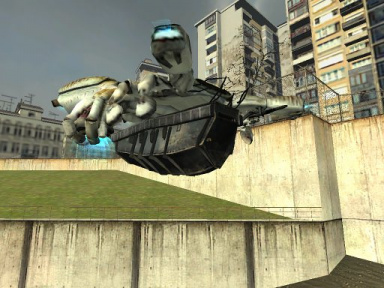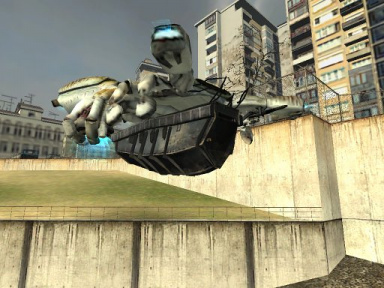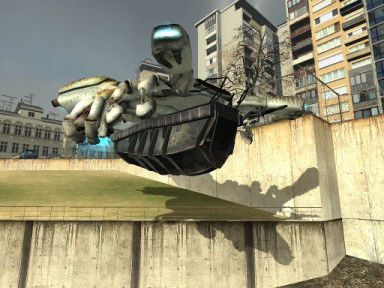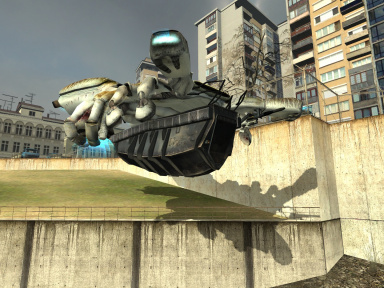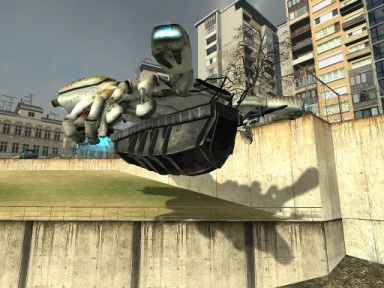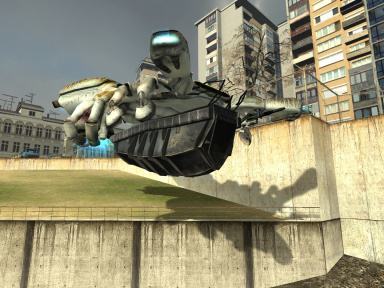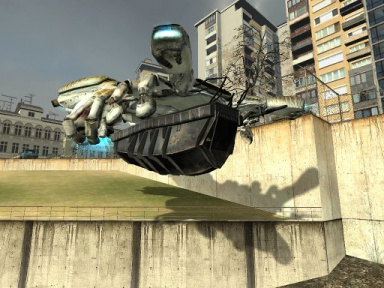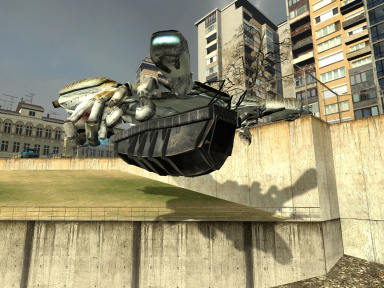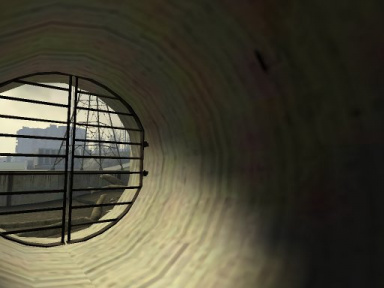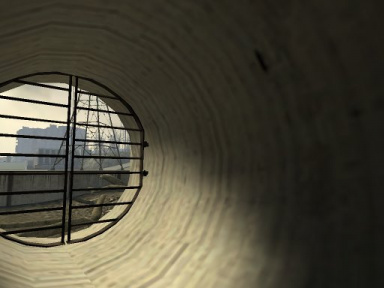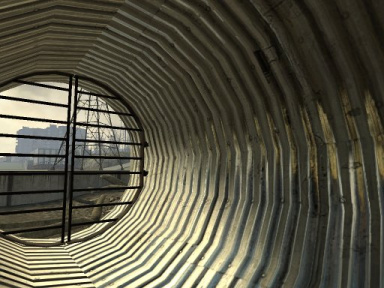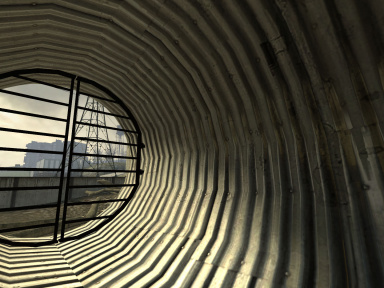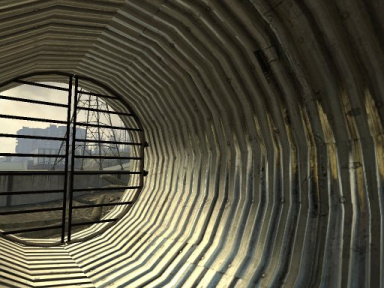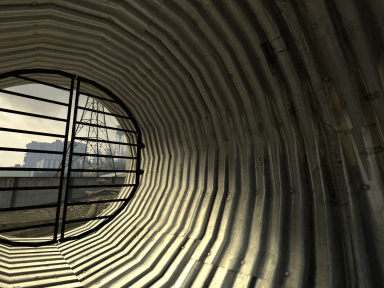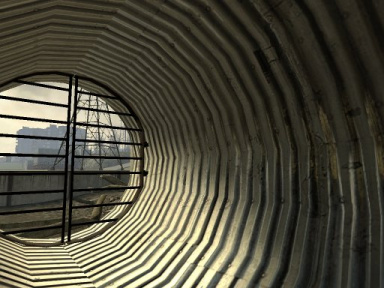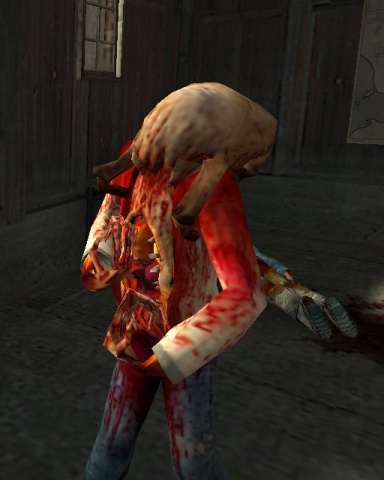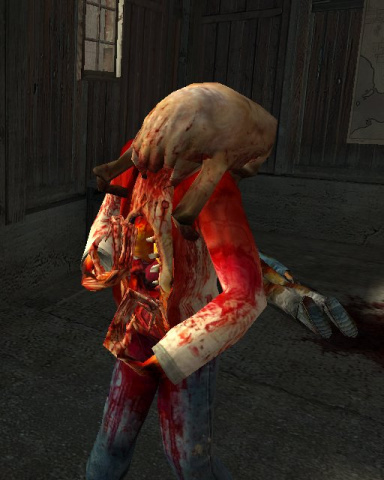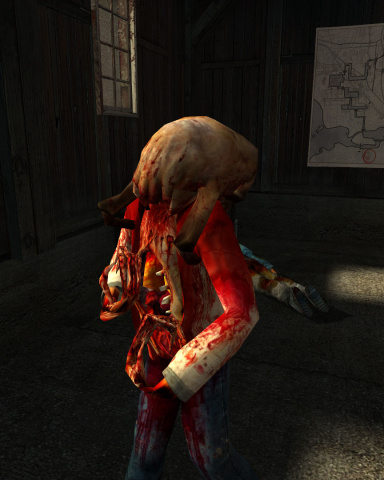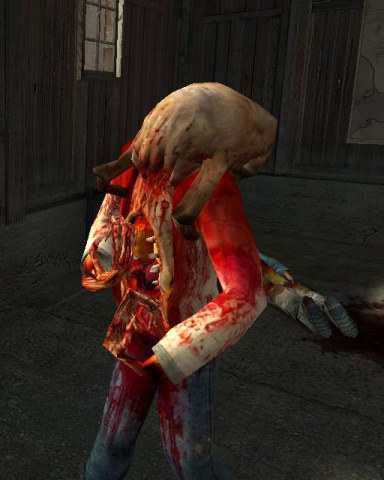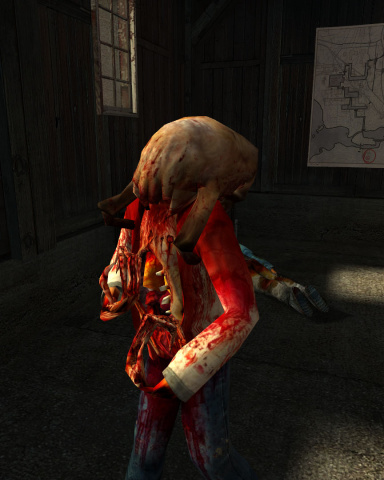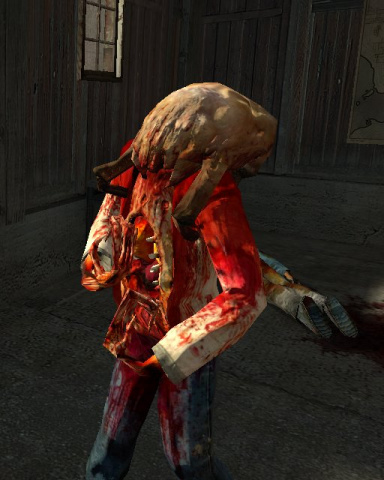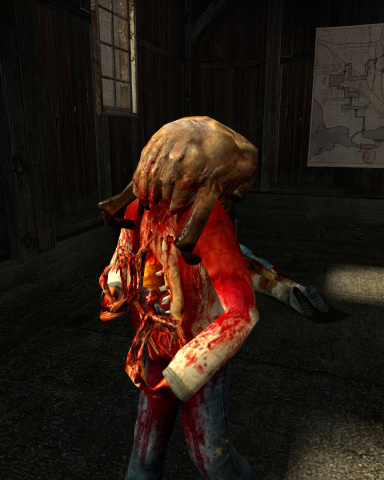DirectX Versions

Source engine games (prior to Left 4 Dead), has a DirectX level systems to provide compatibility with older (DX8 or earlier) or weaker DirectX 9-capable GPUs, by disabling certain graphical features not available (or works poorly) in older/weaker graphics card and lowering the graphical settings.
Each section has a description of what each version of DirectX is capable of, for reference when creating fallback materials for older GPUs with lower DirectX feature levels. Under each heading are features not available in previous versions of DirectX.
To run the game with lower DirectX levels on the newer graphics card, use the mat_dxlevel cvar, or -dxlevel command line arguments. Set it to 60, 70, 80, 81, 90 or 95 to set the corresponding DirectX version; it is not possible to run at a higher level than the graphics hardware is capable of.
mat_dxlevel (DirectX levels), does not actually change Direct3D version to Direct3D 8 or older. Source will always run on Direct3D 9 (or Direct3D 11/12 on some third-party engine branches). However, the materials, effects and shaders will be changed or disabled for compatibility or to improve performance with older GPUs that predates or have poor support for DirectX 9, or to allow modern tools such as Nvidia's RTX Remix (also used in Portal with RTX and upcoming Half-Life 2 RTX), replacing DX7/DX8 level assets with PBR capable materials and improved lighting.
Additionally, DirectX levels should not be confused with Direct3D versions. As a example, GeForce FX 5x00 by default, while support DirectX 9.0a level, the game will force the card to run at DirectX 8.0 level by default (according to dxsupport.cfg).
The only modern Source engine branch that still supports older DirectX levels (down to 8.0) is
To fix this issues, see Fix DirectX 8.0 level on modern hardware. After doing the steps on that section, the Hardware DirectX level should display DirectX 9.0+. Next, configure your video settings (most systems should be able to handle "High" or "Very High" texture, model, shader, shadows, etc. easily).
Users must remove the
-dxlevel command line after launching the game once to prevent the game from reset the video settings to default. (tested in: DirectX levels
Contents
- 1 DirectX levels
- 2 dxsupport.cfg
- 3 Fix DirectX 8.0 level on modern hardware
- 4 Sample screenshots
- 5 References
- Since Source 2006, DirectX 6 is no longer supported but still unofficially supported, and in Source 2007 or Source 2009, both DirectX 6 and 7 support has been dropped (except RTX Remix games).
- Starting with Left 4 Dead engine branch and later Source games, the DirectX levels system (aswell as all DirectX 8 and early DirectX 9 cards) was dropped in favor of shader & effect details option and automatic GPU memory size detection.
- While DirectX 8 level is supported in Source 2007, Source 2009 and Source 2013, not all pre-L4D branch games support them and using it may crashes the game, such as Postal III and many third-party Source games.
DirectX 6 compatibility level
Referred to as "DirectX 6.0" on video settings and "dxlevel 60". DirectX 6-class graphics cards include the Nvidia TNT2 and Matrox G400.
These graphics card and this DirectX version are not officially supported by Valve, but still functional until Source 2007.
DirectX 7 compatibility level
Referred to as "DirectX 7.0" on video settings and "dxlevel 70". DirectX 7-class graphics cards include the Nvidia GeForce 256, 2, 2MX and 4MX cards and the ATI Radeon R100 (7xxx) series.
Additionally, RTX Remix games such as ![]() Portal with RTX and the upcoming
Portal with RTX and the upcoming ![]() Half-Life 2 RTX uses DirectX 7 level, then replacing the textures, models and lighting with PBR textures and ray-traced lighting, then renders in Vulkan (using DXVK) before converting again to Direct3D 12 (DX12).[3]
Half-Life 2 RTX uses DirectX 7 level, then replacing the textures, models and lighting with PBR textures and ray-traced lighting, then renders in Vulkan (using DXVK) before converting again to Direct3D 12 (DX12).[3]
- Features
- Blob shadows
- Displacement map texture blending
DirectX 8 compatibility level
A bug report can be found here: Issue 540 on GitHub
Referred to as "DirectX 8.0" on video settings and "dxlevel 80". DirectX 8-class graphics cards include the Nvidia GeForce4 Ti and most of the GeForce FX 5x00 series (while technically DirectX 9 cards, the latter suffer from major performance problems and graphical glitches with the DX9 rendering path).[4]
- Features
- Refractions with the use of a du/dv map
- Dynamic shadows
- Directional lighting on world brushes using normal maps
- Cube-mapped specular effects
- Cube-mapped water
- Low-quality reflective water (used sparingly)
DirectX 8.1 compatibility level
Referred to as "DirectX 8.1" on video settings and "dxlevel 81". DirectX 8.1-class graphics cards include the Nvidia GeForce FX 5800 and 5900 and the ATI Radeon 8500/9100 and 9000/9200 cards.
Like most of the GeForce FX 5x00 series card, both FX 5800 and 5900 (which are DX9 cards) also suffers from performance issues and graphical glitches on DirectX 9 level.[4] But unlike other GeForce FX 5x00 cards, it runs on DirectX 8.1 level which has soft dynamic shadows.
- Features
- Soft edge dynamic shadows
DirectX 9 (Shader Model 2)
Introduced in December 2002, referred to as "DirectX 9.0" and "dxlevel 90".
DirectX 9-class graphics cards include the Nvidia GeForce 6 series (6600, 6800) and the ATI Radeon 9500/9600, 9700/9800, X300/X600 and X800 cards.
- Features
- Refractions with the use of a bump-map
- High-quality reflective water (used frequently)
- Softer edge dynamic shadows
- This means that the "High" shadows detail option will be visible and can be selected.
- To enable High shadows on Intel GPUs, use "-force_vendor_id 0x10DE -force_device_id 0x1088", tricking the game into thinking that the user has a "NVIDIA GeForce GTX 590", enabling High shadows.
- The command above may not be available in older Source games prior to 2012/2013, you can workaround this using
 other methods listed on PCGW.
other methods listed on PCGW.
- Normal-mapped lighting on models
- Improved-quality specular effects
Since ![]() Source 2006:
Source 2006:
- High dynamic range rendering (disabled by default)
- Phong shading
- Color Correction
Since ![]() Source 2007:
Source 2007:
- Motion Blur
DirectX 9.0c - Shader Model 3
Referred to as "DirectX 9.0+", "dxlevel 92" (Mac/Linux) and "dxlevel 95" (Windows), aswell as "Direct3D 9.0c". This is the last version of Direct3D that support all version of Windows 98/98SE/ME/2000 and XP.
DirectX 9.0+/Direct3D 9.0c class graphics card includes Nvidia GeForce 6 series (6600, 6800) and ATI Radeon X1000.
- Supported games
dxlevel 95 (or DirectX 9.0c) was first introduced with Half-Life 2: Lost Coast, Day of Defeat: Source and later ![]() Source 2006. Left 4 Dead engine branch games and above requires DirectX 9.0c in order to run.
Source 2006. Left 4 Dead engine branch games and above requires DirectX 9.0c in order to run.
- Features
- Lightwarp support
- High dynamic range rendering (enabled by default)
- Bicubic lightmap (in all games since
 20th anniversary)
20th anniversary)
DirectX 9Ex / Windows Aero DirectX extensions
This feature is exclusive to ![]() Source 2013 and
Source 2013 and ![]() Counter-Strike: Global Offensive engine branch. DX9Ex may improve/reduce performance on certain hardware, depending on the graphics driver.
Counter-Strike: Global Offensive engine branch. DX9Ex may improve/reduce performance on certain hardware, depending on the graphics driver.
DX9Ex is only available on Windows Vista or later.
In Source 2013, DX9Ex can be disabled/enabled by toggling the "Windows Aero extensions" in Video Options > Advanced, or through mat_disable_d3d9ex console command.
In Counter-Strike: Global Offensive, DX9Ex can be disabled using the -disable_d3d9ex command line.
DirectX 9.0c on other platforms
Game consoles (dxlevel 97/98)
Referred to as "dxlevel 97" (PS3)[confirm] and "dxlevel 98" (Xbox 360). Made specifically for both ![]() and
and ![]() . Equivalent to
. Equivalent to dxlevel 95 on PC.
dxlevel 95 after changing video settings). Only works for Xbox 360 or PlayStation 3, where it is required (and enabled by default).- Features
- GPU Particle Physics
Mac/Linux/Android (dxlevel 92)
These platform uses dxlevel 92, which is also equivalent to dxlevel 95, but use the translator ToGL to convert the DirectX calls to OpenGL calls. Only on ![]() macOS and
macOS and ![]() Linux, and other platforms/operating systems that do not support Direct3D and DirectX.
Linux, and other platforms/operating systems that do not support Direct3D and DirectX.
DirectX 10
Introduced with the release of ![]() Windows Vista (and it was only supported on Vista or later), DirectX 10 (and D3D10) is not supported on Windows XP. Referred to as "
Windows Vista (and it was only supported on Vista or later), DirectX 10 (and D3D10) is not supported on Windows XP. Referred to as "dxlevel 100".
DirectX 10-class graphics cards include the Nvidia GeForce 8/9/100/200/300 series, Intel GMA X3100, X3500, GMA 4500, and the ATI Radeon HD 2000/3000 series cards.
While Intel HD Graphics (2010), Intel HD 2000/3000 is technically a DX10 card, Source by default (according to dxsupport.cfg) forces it to run at dxlevel 90 instead of dxlevel 95, even if you launch the game for the first time with Nvidia/AMD high performance GPUs on a laptop with dual switchable GPU (integrated and dedicated).
- Features
- Unified shader pipeline (fixed-function pipeline has been dropped)
- Shader Model 4.x
- Supported games
While dxlevel 100 is mentioned in dxsupport.cfg on all games since Left 4 Dead engine branch and above, none of the Source engine branch actually supports and use Direct3D 10.
Additionally, Valve later said that DirectX 9 is still sufficient, therefore no Source engine games actually uses Direct3D 10.[5]
All of the DX10 features shown in that PDF file was already supported on "dxlevel 95" (DirectX 9 SM 3.0) and Xbox 360 (which uses "dxlevel 98").
D3D9 renderer with DX10 level
In ![]() Source Filmmaker by default, aswell as the original release of
Source Filmmaker by default, aswell as the original release of ![]() Dota 2,[6] both games runs on DX10 level, but the renderer still remains on Direct3D 9.
Dota 2,[6] both games runs on DX10 level, but the renderer still remains on Direct3D 9.
DirectX 11
Referred to as "dxlevel 110".
DirectX 11-class graphics cards include the Nvidia GeForce 400 (except GeForce 405) series, Intel HD Graphics 2500, HD 4000 (2012), and the ATI Radeon HD 5000 series.
Like previous Intel graphics cards, Intel HD 2500/4000 is technically a DX11 card, Source by default (according to dxsupport.cfg with "Intel Unknown" profile) forces it to run at dxlevel 90 instead of dxlevel 95, even if you launch the game for the first time with Nvidia/AMD high performance GPUs on a laptop with dual switchable GPU (integrated and dedicated).
- Features
- Shader Model 5.0
- Multithreaded rendering
- Support for Tessellation
- Supported games
![]() Source 2 natively supports and runs on Direct3D 11 by default, but Source 2 also supports Direct3D 9 for older DX9 GPUs (support was dropped in 2021 with Dota 2 update, with only SteamVR Home still support DX9). Titanfall engine branch was the first Source branch that supported D3D11.
Direct3D 11 also has backward compatibility support for DirectX 10 or earlier feature level cards, but some later games may require DirectX 11 level cards.
Source 2 natively supports and runs on Direct3D 11 by default, but Source 2 also supports Direct3D 9 for older DX9 GPUs (support was dropped in 2021 with Dota 2 update, with only SteamVR Home still support DX9). Titanfall engine branch was the first Source branch that supported D3D11.
Direct3D 11 also has backward compatibility support for DirectX 10 or earlier feature level cards, but some later games may require DirectX 11 level cards.
- All
 Source 2 games
Source 2 games  Strata Source
Strata Source Titanfall engine branch
Titanfall engine branch Vindictus (introduced in later updates, but the game still uses
Vindictus (introduced in later updates, but the game still uses dxlevel 95level instead.)
DirectX 12
Introduced in 2015, later backported to Windows 7 in 2019. D3D12 and DX12 are not supported on Windows 8 or 8.1. Referred to as "dxlevel 120".
DirectX 12-class graphics cards include the Nvidia GeForce 900 series, Intel HD Graphics (from 2015-2016), and the AMD Radeon 200 (GCN 2.0), Radeon 300 series cards.
Like previous Intel graphics cards, while these are technically a DX12 card, Source by default (according to dxsupport.cfg with "Intel Unknown" profile) forces it to run at dxlevel 90 instead of dxlevel 95, even if you launch the game for the first time with Nvidia/AMD high performance GPUs on a laptop with dual switchable GPU (integrated and dedicated).
- Features
- Low-level rendering API, similar to Vulkan
- Shader Model 5.1
- Ray tracing (since Windows 10 October 2018 (1809) Update, requires RT-capable GPUs)
- Dynamic refresh rate (since Windows 11)
- Supported games
 Apex Legends - using
Apex Legends - using -anticheat_settings=SettingsDX12.jsoncommand line argument - enables Direct3D 12.- All games using RTX Remix (including
 Portal with RTX) - converts D3D9 (DX7 level) to Vulkan then converted again to D3D12.[3]
Portal with RTX) - converts D3D9 (DX7 level) to Vulkan then converted again to D3D12.[3]
dxsupport.cfg
This file is located at the bin folder of the game, it is used to set the graphical settings (MSAA, anisotropic filtering, etc.) or DirectX versions for a specific graphics card listed on the file.
For example, on the system with GeForce FX 5900, the game will first detect the exact card and load the "GeForce FX 5900" profile according to its "VendorID" (0x10de) and "DeviceID" (0x0334), then set the default launch resolution to 800x600, DirectX level 8.1 (with max level 9.0), disable motion blur and set Anisotropic filtering to 2X. The GeForce FX 5900 along with other FX 5x00 series are technically DX9 card, but as mentioned above, it suffered from poor performance and graphical glitches with DX9 rendering path.[4]
Over time, this file was later updated to include new GPUs up to the GeForce 500 series or Radeon HD 6000 series (in most Source games). It is automatically generated by "dxsupport.pl" Perl script, which was not included anywhere on the game folder nor the officially released Source 2013 or Alien Swarm code. The file can be also manually edited to include new GPUs (such as NVIDIA GeForce RTX 3060 as a example).
Additionally, dxsupport.cfg also includes other DirectX versions such as dxlevel 92/97/98/100, these only works on console ports (![]() ,
, ![]() ), Dota 2 and SFM (both are only Source games run on DirectX 10 level, but using D3D9 renderer), or platforms such as Mac/Linux (which uses
), Dota 2 and SFM (both are only Source games run on DirectX 10 level, but using D3D9 renderer), or platforms such as Mac/Linux (which uses dxlevel 92 and uses ToGL to convert DirectX calls to OpenGL).
GPUs not listed on the dxsupport.cfg will instead load the "NVidia/ATI/Intel Unknown" and set certain graphics to low and anti-aliasing to disabled by default, sometime this can cause a bug that the game defaults to DirectX 8 level even on modern hardware. The game may also default to DirectX 9.0 instead of 9.0+ (95) when running on a laptop with dual switchable GPU (integrated Intel & dedicated Nvidia/AMD), this issues does not affect integrated AMD GPUs.
RTX 3060 profile example
This is a example profile for the Nvidia GeForce RTX 3060, combined with ConVar taken from "Nvidia 7800 GTX" dxsupport.cfg profile.
Fix DirectX 8.0 level on modern hardware
On some modern hardware (or systems with newer graphics card), when you start Half-Life 2 or Portal (and some Source 2013) games for the first time, the game may default to DirectX 8 level, or DirectX 9.0 (on laptops with dual switchable GPUs, systems with Intel HD Graphics/Intel Arc) instead of DirectX 9.0+.
To fix this, run the game once with -dxlevel 95 command line argument (or launch options), then quit the game and remove the command line (to prevent the game from changing video settings to default). The "Hardware DirectX level" should display as DirectX 9.0+ on the video options.
Sample screenshots
Additionally, all screenshots appeared to be based off the default settings (with the exception of Train Station screenshots with maximum settings and MSAA 8X), with no anti-aliasing and little to no anisotropic filtering (or bilinear/trilinear texture filtering).
On some hardware running newer version of Half-Life 2, the game may run at 4X MSAA and has 8X anisotropic filtering by default, unlike previous versions (Old Engine).
 Canals
Canals
These screenshots demonstrate displacement map texture blending, directional lightmaps and cubemapped then reflective water.
| DirectX levels | Old Engine | New Engine (Source 2013) | 20th Anniversary |
|---|---|---|---|
| DirectX 6.0 | 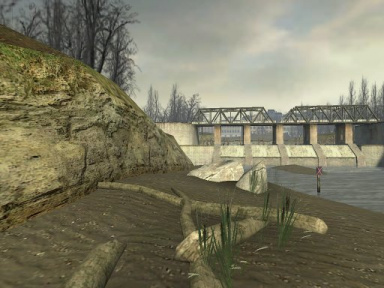 |
Unsupported since Source 2007 | |
| DirectX 7.0 | 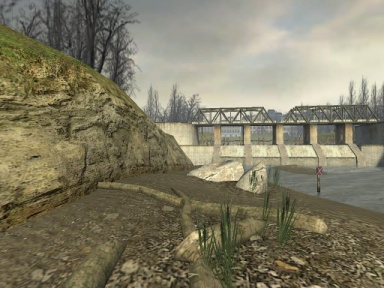 |
Unsupported since Source 2007 | |
| DirectX 8.0 | 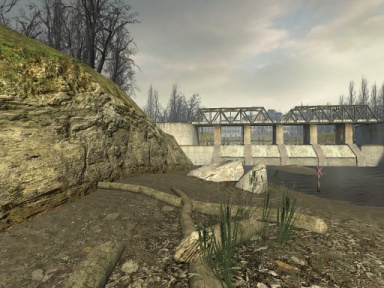 |
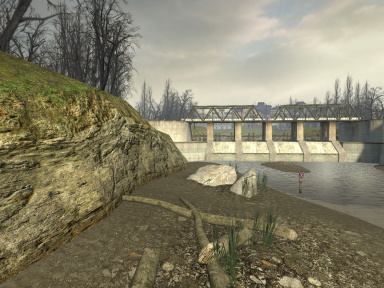 |
[Todo] |
| DirectX 8.1 | 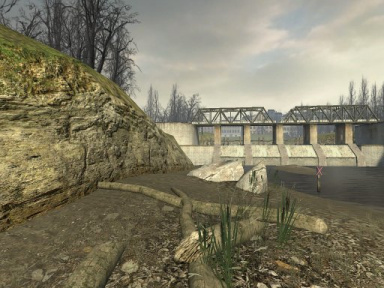 |
 |
[Todo] |
| DirectX 9.0+ | 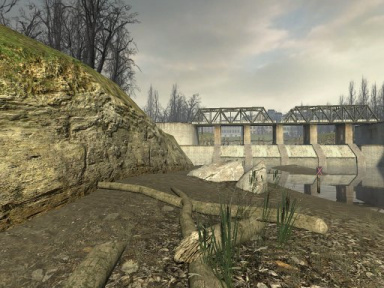 |
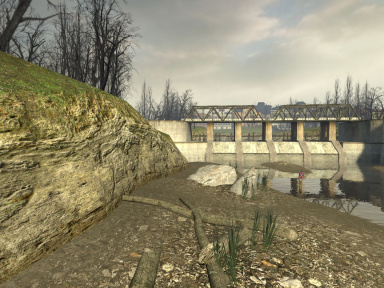 |
[Todo] |
 Dropship
Dropship
These screenshots show shadow quality at different rendering levels, ranging from none to soft, dynamic shadows.
 Storm drain
Storm drain
These screenshots show directional lightmaps and cube-mapped specular effects.
 Zombie
Zombie
These screenshots demonstrate the use of normal-mapping on models. The final shot has full, normal-mapped lighting.
 Train Station (fake volumetric lighting)
Train Station (fake volumetric lighting)
These screenshots shows the differences between DirectX 8 and 9 on the fake volumetric lighting. While the DirectX 9.0+ volumetric lighting on Old Engine was slightly less visible compared to DX8 counterpart, the volumetric lighting on New Engine DX9 was even less visible (or nearly invisible) compared to Old Engine's DX9, probably due to a bug (or changes to the lighting/shaders) on Source 2007 and later.[1][2] This has been fixed in Half-Life 2: Update.
 Portals
Portals
These screenshots compares the texture and particles quality on the portals. Also Portal with RTX added here as it's the only Source 2013 game which support DX7 level, but with all of it's materials replaced with PBR-capable materials and real-time ray-traced lighting.
| DirectX levels | Image |
|---|---|
| DirectX 7.0 and earlier | Unsupported and non-functional. Screenshot identical to DirectX 8.0. |
| DirectX 7.0 (Portal with RTX only) |
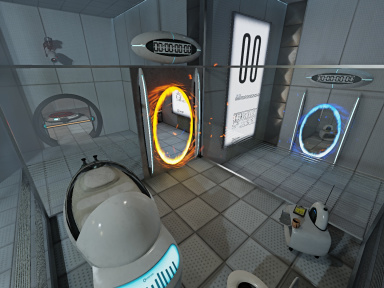
|
| DirectX 8.0 | 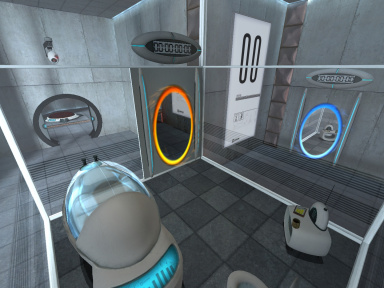
|
| DirectX 8.1 | 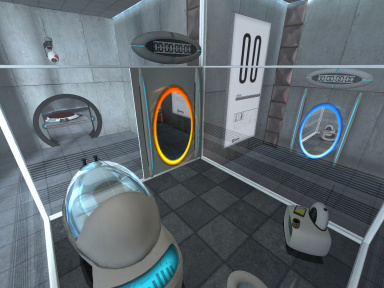
|
| DirectX 9.0+ (LDR) |
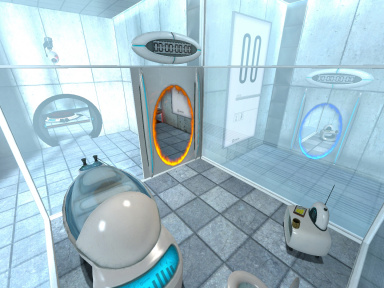
|
| DirectX 9.0+ (HDR) |
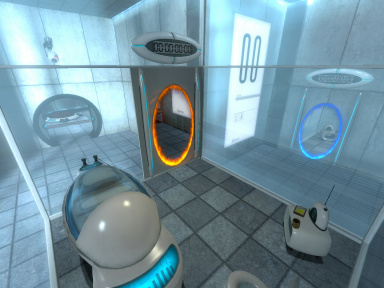
|
References
| References | ||||||||||||
|---|---|---|---|---|---|---|---|---|---|---|---|---|
|

